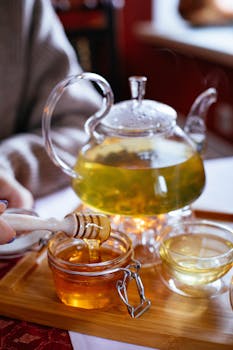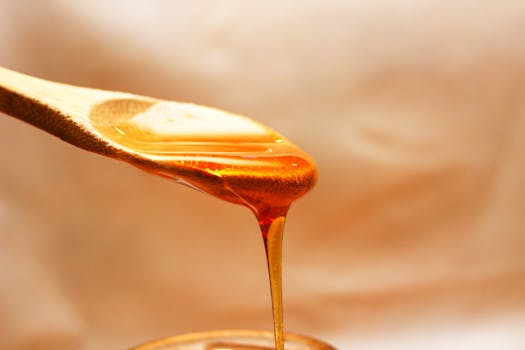Benefits
Antioxidant Properties
Antibacterial and Anti-inflammatory Effects
Digestive Aid
Energy Boosting
Get creative with Honey
Adding a touch of sweetness to homemade salad dressings, not only for flavor enhancement but also for its emulsifying properties
Creating a natural face mask by combining honey with other ingredients like oatmeal or avocado, utilizing its moisturizing and antibacterial benefits for the skin
Incorporating honey into a marinade for meats, offering a caramelized glaze when grilled or roasted, and lending a delicate sweetness that balances out savory spices
Crafting homemade lip balm with honey as a key ingredient, taking advantage of its soothing and healing properties to keep lips soft and hydrated
Utilizing honey as a natural cough suppressant and throat soother by mixing it with warm tea or lemon water, leveraging its antimicrobial properties to alleviate cold symptoms
Something you can make with Honey
Origin
Honey has a long and ancient history, with its origins dating back thousands of years. The production of honey can be traced back to ancient civilizations in Egypt, Greece, and Mesopotamia. The exact origin of honey is difficult to determine, as it is believed to have been discovered independently by different cultures.\n\nHistorically, honey was collected from wild beehives found in trees or rock crevices. Ancient civilizations soon realized the value of honey as a natural sweetener, food preservative, and medicinal substance. Honey was highly regarded for its taste, nutritional value, and healing properties.\n\nThe practice of beekeeping and the domestication of bees began around 4,500 years ago in Egypt. The Egyptians developed specialized techniques for beekeeping, using clay hives and managing the bees' colonies. They also used honey in religious rituals and as a form of currency.\n\nHoney production and consumption spread throughout the Mediterranean region, with the Greeks and Romans also valuing honey for its various uses



